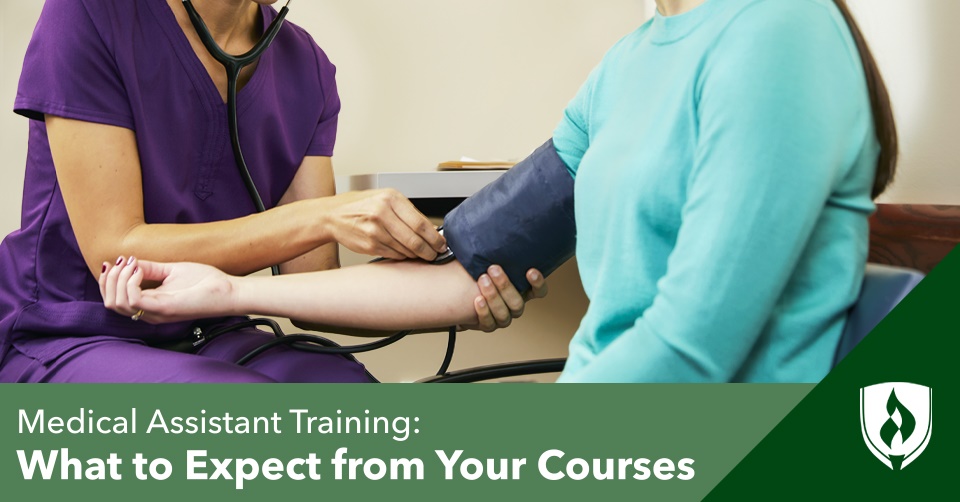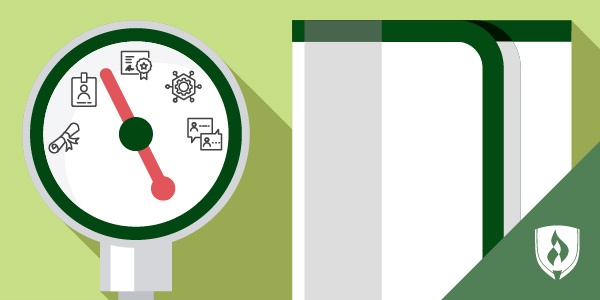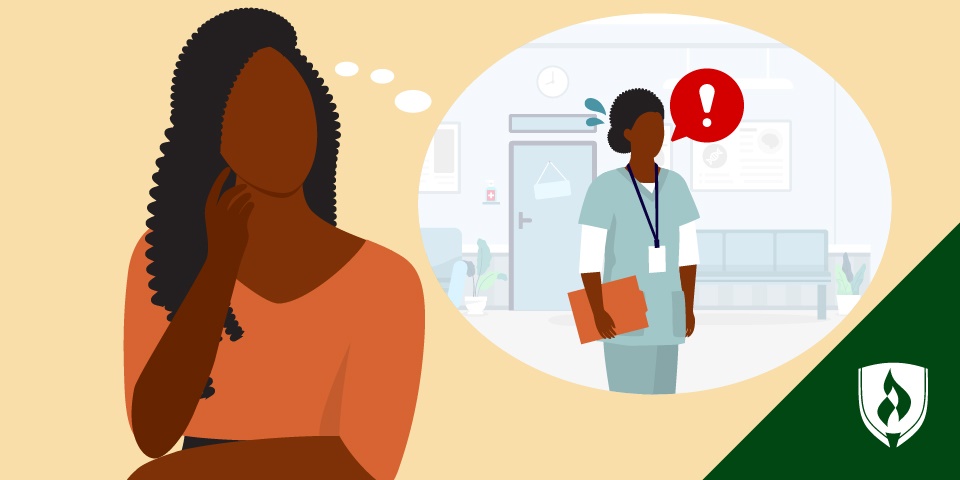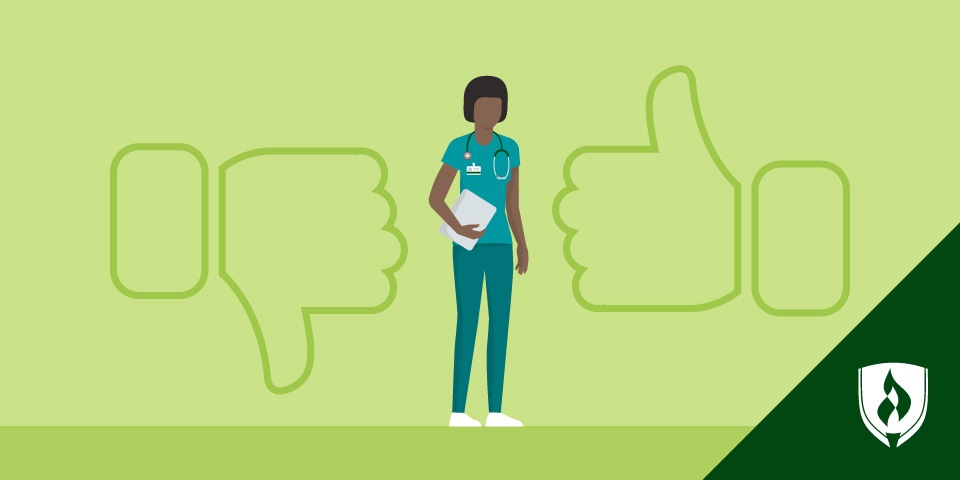
A medical assisting career is a great way to enter the healthcare field. Employment of this role is likely to grow—the Bureau of Labor Statistics projects that this role will see a 23 percent increase in employment from 2018 to 2028.1 But will you have devote years to earning a medical assisting degree?
Unlike many other healthcare careers, you don't need a degree at all! You'll just need to complete a medical assistant training program, which can be completed rather quickly. For example, the Rasmussen College Medical Assisting Diploma program can be finished in as few as 12 months.2
That’s all great to know, but you're still curious about what your medical assistant training and education will be like. After all, it is an investment of your time and energy. You want to know exactly what you're signing up for and whether you’ll be up for the task.
To help with that, we’ve asked Lauren Ramirez, Department Chair of the Medical Assisting program at Rasmussen College, to give you an inside look at what you can expect from their medical assistant courses. Not only will we cover the skills you can expect to gain but course formats, certification, and next steps for a successful healthcare career. Curious how long it takes to become a medical assistant? Read more here.
What can I expect to learn in my medical assistant training?
The work of a medical assistant covers a lot of ground—they’re flexible members of a healthcare team that can quickly jump from being right in the thick of direct patient care tasks to tackling important administrative work. To prepare for this role you’ll need coursework that develops both technical know-how and broadly useful transferable skills. Let’s take a closer look at what you can expect to refine.
Technical skills you’ll develop through medical assistant training
Let’s start with the technical skills and abilities you’ll need for the job. When providing direct patient care as a medical assistant, there are many minor medical procedures you’ll participate in. Here are just a few examples Ramirez says you can expect to take on:
- Ablations
- Cauterizations
- Bladder botox
- Biopsies
- Cystoscopy
- Splint and brace fitting
- Staple and suture removal
- Lab specimen collection and processing
- Wound irrigations
- Incision and drainage
To gain the skills necessary for this, you’ll need to learn about aseptic techniques, infections, pathologies, and development patterns. You’ll also need to understand how to take patient vitals such as blood pressure, heart rate, respiration rate, and how to use a pulse oximeter.
Drawing blood and operating an electrocardiogram, or EKG, are also important parts of a medical assistant’s role. At Rasmussen College, you’ll cover much of this material in a course called Fundamentals in Clinical Techniques. Not only does this include valuable medical instruction, but you’ll also learn important information about medical laws and policies.
But as you know, direct patient care is only part of the picture—a large part of medical assisting includes administrative tasks. Learning how to navigate electronic medical records (EMR) systems is crucial to this function. To understand both physician and patient information, you'll need a solid understanding of medical terms and basic anatomy. Scheduling appointments and managing insurance issues are also duties you can expect to encounter.
Transferable skills you’ll develop through medical assistant training
While technical skills are important in medical assisting, the transferable skills you’ll learn are equally essential. Ramirez highlights three things she sees as crucial to the success of Medical Assisting students:
Empathy is one of the most important skills in any healthcare position and medical assisting is no different. Understanding alternative perspectives is the foundation of good communication and teamwork. Not only will it help you stay attuned to the needs of patients, but it will also aid in building relationships with other healthcare staff. Ramirez points out that medical assistant training is a great way to develop empathy.
“Students will quickly learn to place themselves in their patient's shoes,” she says.
Often the primary reason a patient is making a visit to a doctor’s office is to seek relief from a medical issue, and with that can come fear and anxiety. Being able to treat patients the way you’d like to be if you were in their shoes is important.
Communication skills are key as a medical assistant. Whether you’re reading the body language of a patient or an email from the physician, it's important to pay attention and respond clearly and concisely.
“Communication is vital to ensure patients receive correct and effective medical care,” says Ramirez.
If you pass over an important detail or fail to relay a piece of information, the quality of care could be significantly impacted. That’s why your medical assistant courses thoroughly cover active listening, verbal and written communication, and strategies on how to navigate collaborative situations.
Teamwork is crucial in healthcare. For others to do their jobs effectively, they need your support.
“Medical assistants are a piece to the puzzle for the medical team,” says Ramirez.
By knowing your role and understanding your team’s overarching goals, you can benefit both those you work with and the patients you serve. Ramirez reflects on how students learn to work together in an MA program:
“Even with small ratio classes,” she says, “students are able to pair up and work with each other on patient management skills, practical skills, and laboratory skills.”
No matter what career you end up pursuing, the ability to work on a team will serve you well.
How are medical assistant training courses taught?
While every program is different, the Medical Assisting program at Rasmussen College offers a blend of online and in-person courses.
Online courses are a great option for this kind of program because they offer flexibility for students who are working or just prefer to meet deadlines on a more independent basis.
Having some courses online also provides students the opportunity to utilize virtual learning tools. For example, Rasmussen College has created over 50 tutorial videos covering various medical assistant tasks step by step to use as a supplement for student learning. This allows students to review everything from performing a cholesterol test to sterilizing instruments until they feel confident.
Virtual simulations are another great tool for online learning. For example, at Rasmussen College, this includes electronic health record simulations and virtual labs. These interactive simulations can help students apply what they’re learning from the comfort of home. Ramirez says these simulations are a great way to learn about tools being used in the medical field such as ultrasound software, otoscope cameras, and digital EKGs.
Being a clinical discipline, however, it is important to have hands-on experience in your MA program. At Rasmussen College, mock clinical reviews help students practice rooming a patient, dealing with unexpected challenges, and treating diverse populations that require special types of care. You’ll also complete a clinical externship at a medical facility where you’ll work under the supervision of staff to treat everyday patients. This will give you the chance to shadow experienced medical assistants and practice your skills under their watch. To Ramirez, this kind of hands-on opportunity will not only help you hone your clinical ability but also develop students’ time-management skills and their ability to balance work and life.
What comes after medical assistant training?
While most medical assistants are not required to earn additional certification, the BLS reports that many employers prefer candidates with a certification.1 That's part of why Rasmussen College includes the certification exam fees for either the CMA or RMA credentials within your program cost.3 You may also elect to become certified in other areas based on your training such as an EKG Certificate or Registered Phlebotomy Technician.
After completing all of your coursework and earning a certification, you’re ready to become a medical assistant. While this can be a great long-term career for many, some may wish to gain experience in this role and then eventually explore other options within healthcare.
For those looking to branch out from medical assisting in the long term, at Rasmussen College your Medical Assisting credits will seamlessly transfer toward a Healthcare or Health Sciences Associate’s degree. Whether you become a lead MA, move into office management, or pursue another specialization, the things you learn in medical assistant training will provide a great foundation for whatever you pursue in the future.
Start your medical assistant training journey
It's hard enough to think about what you're going to eat for dinner tomorrow—much less where you'll be working over a year from now. But every career must start somewhere. Now that you know what you're signing up for, the only question left is, “Are you ready to take the next step?” If so, check out the Rasmussen College Medical Assisting Diploma program page to learn how you can get started with your medical assistant training sooner rather than later. Explore the differences between RMA (ARMA) vs. RMA vs. CMA to understand the distinctions in this field.
1Bureau of Labor Statistics, Occupational Outlook Handbook, [information accessed June, 2020] https://www.bls.gov/ooh/healthcare/medical-assistants.htm. Information represents national, averaged data for the occupations listed and includes workers at all levels of education and experience. This data does not represent starting salaries. Employment conditions in your area may vary.
2Completion time is dependent on the number of transfer credits accepted and the number of courses completed in each term.
3The application fee for each qualified student’s first exam attempt is included in the total program costs. Should you need to take the exam more than once to receive a passing score, you will be responsible for all subsequent exam application fees. Contact an admissions advisor to determine the best exam option for you.




